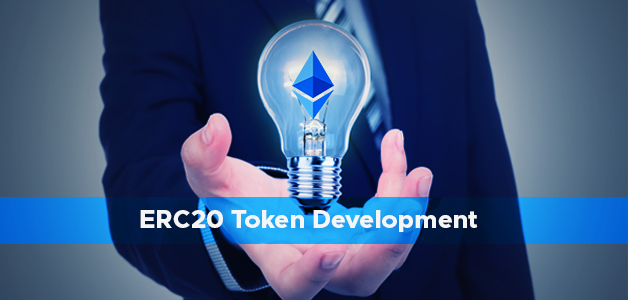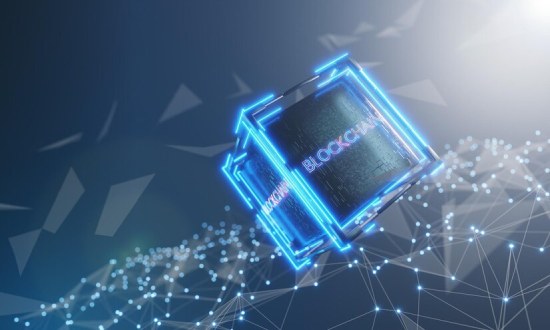-
ERC-20 is the technical standard for smart contract development on the Ethereum blockchain for fungible token implementations. It is one of the most crucial smart contract standards on Ethereum. ERC-20 token standard establishes standards that all fungible Ethereum tokens must follow. As a result, this token standard gives developers the ability to accurately define new tokens' behavior inside the broader Ethereum system. It streamlines and makes it easier for developers to complete their tasks knowing that as long as the token complies with the rules, no new projects will require to rework each time a new token is released. We'll examine the ERC-20 standard in this article, which is a crucial framework for token development. Also, get to know more about Oodles Scaffold's pre-built ERC-20 Token Development module that significantly reduces your time to market.
What are ERC20 Tokens, and How do they Work?
Ethereum developers created the ERC20 token standard to enable the development of digital assets without the need for a new blockchain. Because they are fungible tokens, their value remains constant across the network. ERC20 essentially consists of a smart contract with a collection of APIs. Shiba Inu is the most well-known token created with the ERC-20 standard. In addition, ERC20 also facilitates the development of virtual tokens like uni swap and Ether.
Features of ERC20 Token
- The ERC20 standard's initial and best feature is that a smart contract safeguards it. When conditions are satisfied without the involvement of third parties, this technology automates transactions.
- The ERC20 token standard allows for the interchangeability of assets.
- Due to its great interoperability, the ERC20 standard is appropriate for a variety of business applications.
- An ERC20 token can be designed rapidly, affordably, and easily.
- ERC20 tokens make it simple to raise money in an initial coin offering (ICO), IDO (Initial Dex Offering), IEO (Initial Exchange Offering), and more because they are more widely popular.
- Additionally, the ERC20 token standard's contract is difficult to breach, making it a reliable token type recognized by all platforms.
- ERC20 tokens have high liquidity and generate significant revenue.
Also, Read | A Quick Guide to Ethereum ERC Token Standards
Fundamental procedures for ERC20 Token Development
Select the Business Purpose for the Token
It is the first and most crucial phase of ERC20 token development. The purpose of the ERC20 tokens you intend to produce must be novel. Make a list of desirable attributes and features that correspond to the specifications.
Assign Token Specifications
The following are some of the requirements for developing tokens
- Define the token's name. An ERC20 token development company makes the decision-making processes simpler.
- Provide the token with a symbol. To serve as an identifier, a token would have an address, a logo, or an image.
- Decide on the decimal places for the token. It indicates how many maximum decimal places there would be if the token were divisible.
- The overall quantity of tokens to be in use. It specifies the upper bound at which the smart contract will cease issuing new tokens.
Develop a Smart Contract
Another important aspect of creating an ERC20 token is writing the smart contract codes, which must be consistent with your business logic. It necessitates a thorough understanding of the Truffle deployment tool and the Solidity programming language. An ERC20 token development company should handle the coding stage. The following seven fundamental features must be present in a smart contract built on the ERC20 token:
- Total supply
- Contract Owner
- Approval
- Transfer
- Allowance
- Add or Remove Holder
- Remove Appointee
Examine The Code
The next step after creating a smart contract is testing the code to ensure that all of its capabilities are operational.
Token Validation
Without confirming that the ERC20 tokens are serving their intended purpose and working well, the development of the technology would not be finished. Hiring a skilled Ethereum token development company would make it easier to find the flaws and solve them properly.
Deployment
Put the smart contract into operation on the mainnet. It's the last step. The smart contract is sent to all nodes in the blockchain network after the deployment procedure is finished. Also, Read | ERC-20 Token Standard | A Compact Guide to Development
ERC-20 Token Development | Applications
Security Token Development
Stablecoins and security tokens are comparable. Both might potentially be the same at the contract level due to how they operate similarly. The issuer is where the distinction is made. Securities such as stocks, bonds, or tangible assets are represented by security tokens. They frequently (though not always) give the holder a stake in a company or product.
Utility Token Development
The most popular sort of tokens currently may be utility tokens. Utility tokens are similar to frequent flyer programs. They have a purpose but no intrinsic value. Utility tokens come in use for a wide range of purposes, including loyalty points, in-game revenue, power for decentralized applications, and much more.
Scaffold your own ERC-20 Token in no time with Oodles Scaffold's Pre-Built ERC-20 Token Solution/Module
With our pre-built suite of smart contracts solutions, you can easily construct a range of ERC20 crypto tokens like payments, security, utility, etc., in quite less time. Our pre-coded smart contracts and pre-defined token attributes make up our smart contract solutions for ERC20 token development. Token attributes are customizable in accordance with your unique requirements and use cases, such as for DeFi or dApps.
- Most common token properties
- A front-end and modifiable token attributes
- Presently existing smart contracts
- 100% of the developed token's ownership
- Testnet network deployment and QA testing

Our Offices
INDIA
Emaar Digital Greens, Sector 61,
Gurugram, Haryana
122011.
Welldone Tech Park,
Sector 48, Sohna road,
Gurugram, Haryana
122018.














